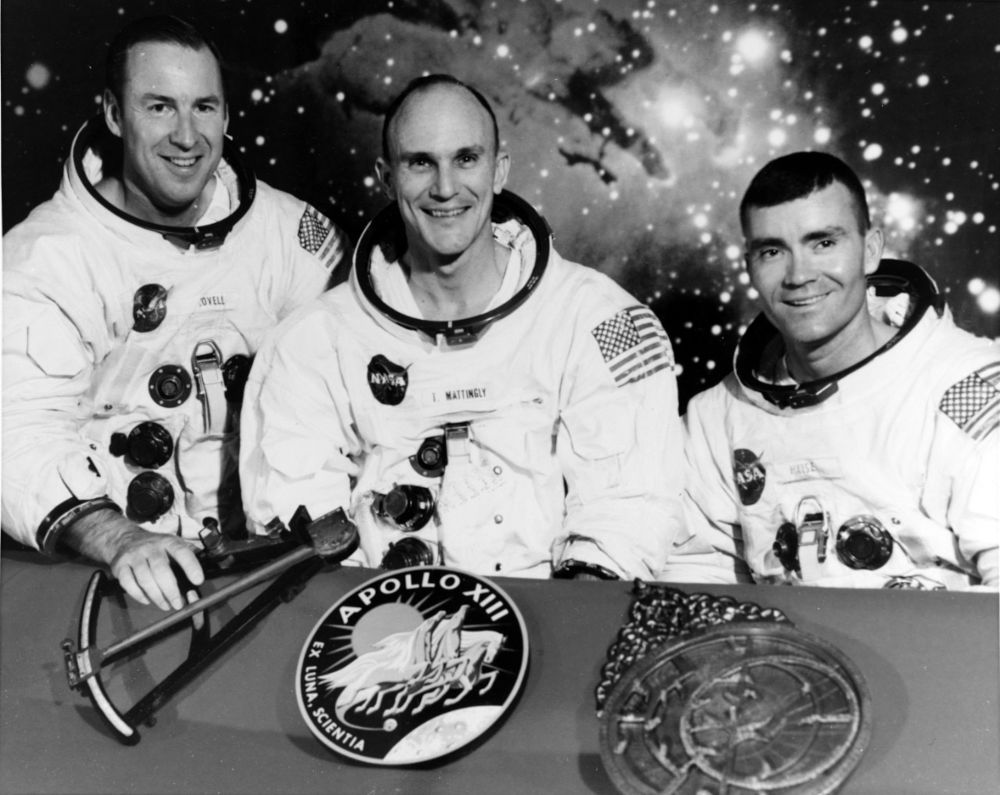Houston, We've Had A Problem
By Robert J. Baird, PhD
October 2022

It is October, the Halloween month. So, let's talk about scary stuff. Not ghosts and goblins or theatrical thrillers. Real fear. The kind of fear that makes you sweat. The "I can't breathe" kind of fear.
On April 11, 1970, NASA's third moon-landing mission, Apollo 13, was launched into space. Fifty-six hours into the flight, an oxygen tank exploded. Commander Jim Lovell is best remembered for his radio transmission, "Houston, we've had a problem." It was actually the Module Commander, Jack Swigert, who actually made the initial call. Here is the official NASA transcript of the event:
Swigert: "Okay, Houston, we've had a problem here."
Mission Control: "This is Houston. Say again please."
Lovell: "Houston, we've had a problem. We've had a main B bus undervolt."
Mission Control: "Roger. Main B undervolt."
Lovell: "It looks to me, looking out the hatch, that we are venting something. We are venting something out into the – into space.
Pardon my French, but this is pretty scary shit. Astronauts. In space. They could literally see oxygen emitting from the space capsule. And yet when they contacted mission control, the astronauts were not screaming in fear. How did they do that? How did they maintain composure in such an anxiety- provoking situation?
Practice.
The Apollo 13 crew spent 2000 hours in mission-specific training, much of it in simulators. While still on terra firma, the astronauts were placed into capsules which were identical to the spacecraft they would use to fly to the moon. As the astronauts would practice various maneuvers, engineers would try to catch them off-guard. An alarm would go off. A switch wouldn't activate. The engineers would cause something to go wrong and the crew had to problem solve. And as the astronauts practiced, they were able to address these simulated challenges with little increase in blood pressure; negligible change in respiration. They learned the skill of remaining composed when confronting fear.
For those of us who experience anxiety and phobias, there is a lesson to be learned: life is a simulator. We can be maneuvering through life just fine, and then out of nowhere, we are thrown for a loop and something triggers the panic-mechanism (the amygdala). We start to sweat, hyperventilate, shake, get nauseous. The whole nine yards of dreadful anxiety.
The amygdala is the part of the brain that initiates the fight-or-flight response and it operates without thinking. If you happen to be taking a stroll in the jungle and around the corner appears a Siberian tiger, you don't have to first think, "Oh no, this is not good. What am I going to do?" Before you even were consciously aware the tiger was there in the first place, the amydala has already started processing stimuli from your eyes to ignite a swift and sudden constellation of physiological actions: increased heart rate (because soon you are going to be running pretty darn fast); increased respiration (because you need to oxygenate the blood supply); dilated or constricted pupils (so your eyes can take-in as much info as possible – or zoom in on the perceived threat); and increased perspiration (because your body needs to be cooled as you exert incredible energy to escape). Another strange action prompted by the amygdala is nausea/diarrhea, because your body can't afford to be wasting energy on digestion when you need the energy to fight or flee the danger – and perhaps that tiger will find you less appetizing if you smell like poop.
An interesting thing about the amygdala is that it operates without thinking. It just reacts to perceptions of danger (real or imagined). [We "think" with the higher cortical structures in the brain.] And it is important to realize that the amygdala is not always accurate. It can activate in error and needs to be corrected.
The challenge is teaching the amygdala to not always ignite. But since the amygdala doesn't "think," we can't communicate with it through language, reason, or logic. We can talk to ourselves and echo a message that some event or situation shouldn't cause us to break-out into a sweat. We can tell ourselves that something is irrational or illogical. We can talk to ourselves (our amydala) till we are blue in the face, but the panic response persists.
If language, reason, and logic are ineffective in getting the amydala to learn, what does it take?
Experience.
The amygdala learns from experience. Psychologically, the amygdala learns on the basis of associations or pairings. Which means we can teach the amygdala not to activate if we put ourselves in situations that elicit anxiety and yet has no negative consequences (other than the anxiety itself). By repeated exposure to anxiety-provoking situations (and surviving the threat), the amygdala learns to calm down and not ignite the body's panic-circuitry.
The key to overcoming anxiety is to expose ourselves to the anxiety-provoking situations so that the amygdala can learn from the experience. Practice. Practice. Practice.
Just as the astronauts use simulators to train for a mission into space, we can use life as a simulator to practice exposure to anxiety-provoking situations. But we don't need to be pollyannish about this. At first it is going to be really uncomfortable and you will want to bolt out of the situation. But fasten your seat belt and endure the discomfort. If things get heated within you, it is because you got the amygdala's attention. Now let it learn from experience that the situation itself is not life-threatening, that it doesn't need to ignite. Give it the experience it needs to learn.
The key to overcoming anxiety is to expose ourselves to the anxiety-provoking situations so that the amygdala can learn from the experience. Practice. Practice. Practice.
For each and every occasion in which you expose your amygdala to an anxiety-provoking situation, let it register within your brain/amygdala that you survived. Pay attention and notice how each episode is different from the one before. While there may be occasions in which the overall experience seems worse, notice what has improved. Was the startle response a bit less intense than the time before? Were you able to re-regulate your breathing easier than the time before? Were you able to remain in the anxiety-provoking environment for five minutes longer than the time before? It is all measurable progress. Evidence that your amygdala is learning. By practicing exposure, you are retraining (and literally rewiring) your brain to be more and more composed when confronting fear.
About the Author

Robert J. Baird, PhD
With his unique combination of degrees and experience, Dr. Baird's practice involves clinical, forensic, and organizational psychology. Within the clinical area, Dr. Baird provides evaluative and counseling services to individuals, couples, and families. Dr. Baird's approach is brief, solution-focused. Areas of clinical expertise include marital and relationship counseling; individual treatment of anxiety, depression, bipolar disorder, and adjustment issues. To learn more about Dr. Baird's clinical style, click the link below.
